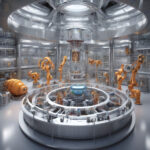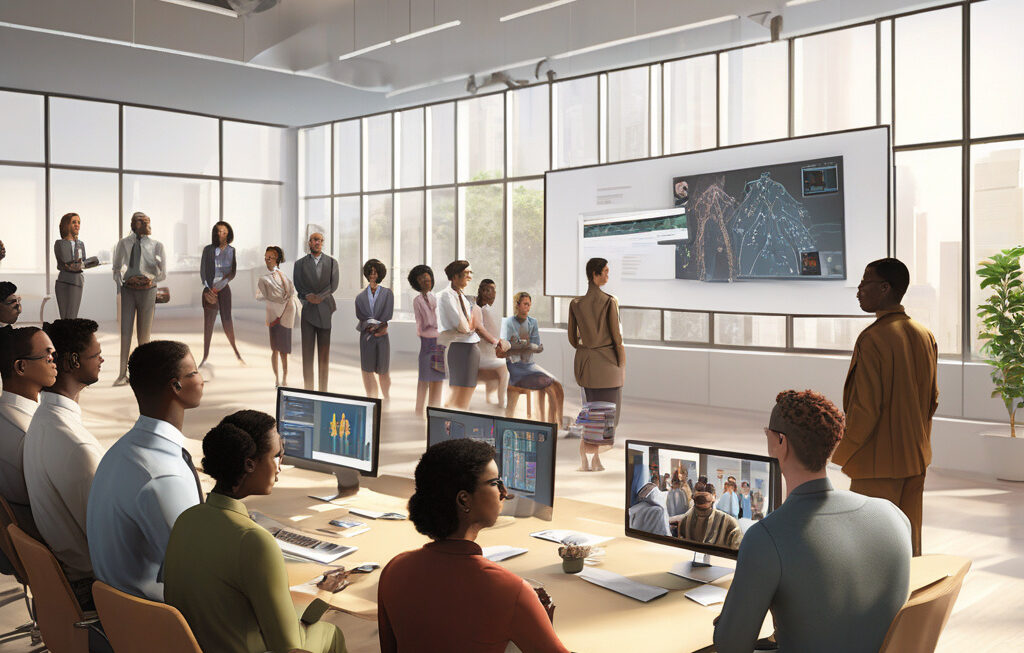AI Could Erase 100 Million US Jobs: Sanders Advocates for Worker-Centric Approach
The rapid advancement of artificial intelligence (AI) technology has sparked both excitement and concern across various industries. While AI has the potential to revolutionize processes, boost efficiency, and drive innovation, there are growing fears about its impact on the job market. In a recent statement, Senator Bernie Sanders issued a stark warning, highlighting that AI could potentially eliminate up to 100 million jobs in the United States. This alarming prediction has reignited discussions about the need for a more balanced and worker-centric approach to AI implementation.
Sanders’ concern stems from the current trajectory of AI development, which often prioritizes cost-cutting measures and automation to maximize profits for corporate billionaires. While increased efficiency and reduced operational costs are undoubtedly attractive to businesses, the human cost of widespread job displacement cannot be ignored. As AI technologies continue to evolve and expand into new industries, the risk of mass joblessness looms large, posing significant challenges for the workforce.
The senator’s call to action centers on the belief that AI should serve workers, not just enrich corporate entities. By shifting the focus towards empowering employees and creating new opportunities for meaningful work, Sanders argues that AI can be harnessed as a force for positive change rather than a source of widespread job insecurity. This perspective aligns with a growing sentiment among labor advocates and policymakers who are pushing for policies that prioritize worker rights and well-being in an increasingly automated world.
One key aspect of Sanders’ argument is the importance of reimagining the relationship between AI technology and human labor. Rather than viewing AI as a direct replacement for human workers, he advocates for a collaborative approach where AI complements and enhances human capabilities. By leveraging AI to handle repetitive tasks, analyze vast amounts of data, and streamline processes, workers can focus on more complex, creative, and value-driven aspects of their roles.
Moreover, Sanders emphasizes the need for proactive measures to mitigate the potential impact of AI-driven job displacement. This includes investing in education and upskilling programs to equip workers with the necessary tools to adapt to a changing labor market. By fostering a culture of lifelong learning and continuous development, individuals can future-proof their careers and remain competitive in a technology-driven economy.
In addition to upskilling initiatives, Sanders highlights the importance of implementing policies that safeguard workers’ rights and ensure fair treatment in the age of AI. This includes advocating for measures such as robust labor protections, retraining programs, and social safety nets to support those affected by job displacement. By placing the well-being of workers at the forefront of AI implementation strategies, policymakers can help mitigate the negative consequences of automation and create a more equitable future for all.
Sanders’ warning serves as a timely reminder of the complex challenges and opportunities presented by AI technology. While the potential for job displacement is a valid concern, it also opens up new possibilities for innovation, growth, and prosperity. By approaching AI implementation with a strong focus on serving and empowering workers, businesses and policymakers can harness the full potential of AI while ensuring that the benefits are shared equitably across society.
As the debate around AI and its impact on the workforce continues to unfold, one thing remains clear: the need for a comprehensive and inclusive approach that prioritizes the well-being of workers in the face of technological advancement. By embracing a worker-centric mindset and proactively addressing the challenges posed by AI, we can pave the way for a more sustainable and prosperous future for all.
AI, Jobs, Worker-Centric, Innovation, FutureOfWork











